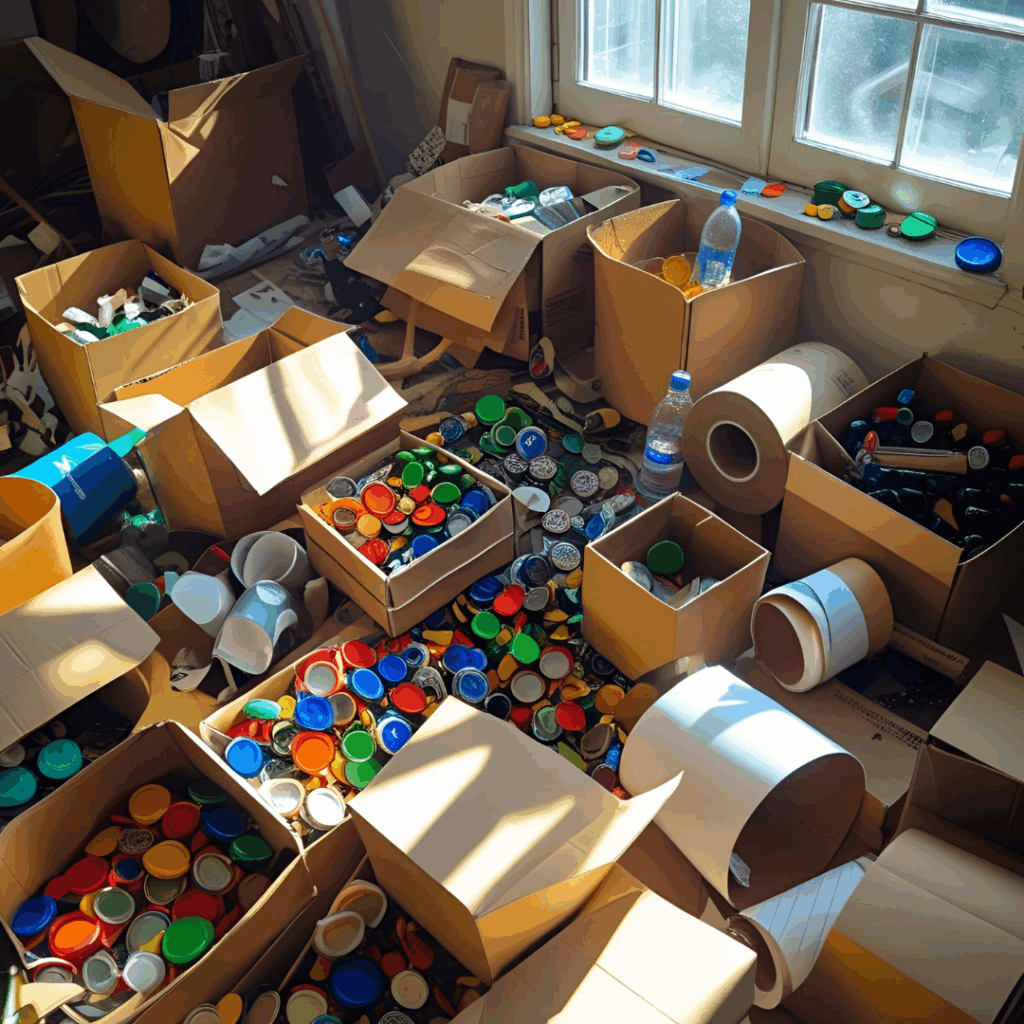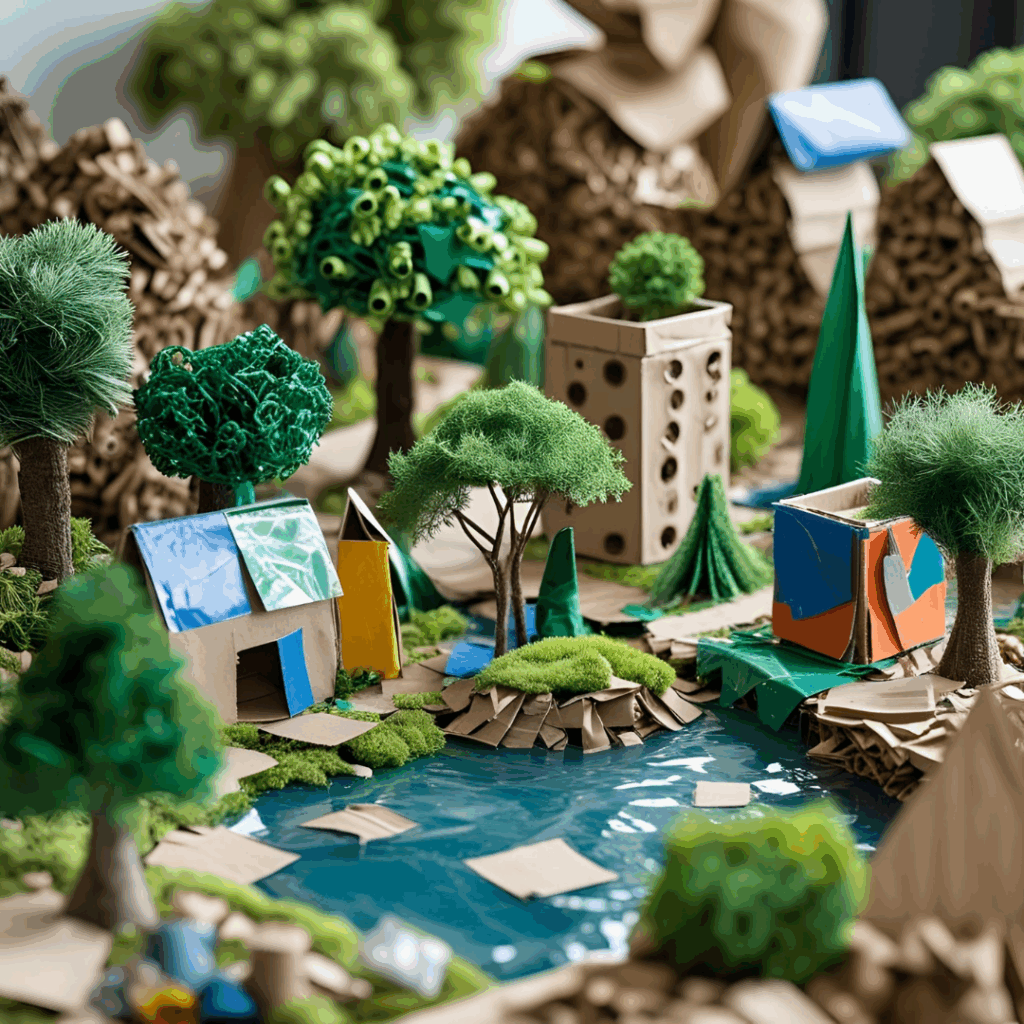How about turning an afternoon of play into an unforgettable lesson about the future of our planet? Building a mini eco-city with recycled materials is an activity that blends fun, creativity, and environmental awareness. This hands-on experience transforms free time into a powerful learning opportunity, encouraging children to think about sustainable solutions for the cities of tomorrow.
Whether it’s for a school project, an educational workshop, or simply a creative moment at home, this is a fantastic idea to teach kids about urban planning, recycling, and citizenship in a way they truly understand and enjoy.
Where to Start? A Practical Guide
Building your mini eco-city is easier than it sounds. Follow these steps:
1. The Treasure Hunt: Gathering Materials
The first step is collecting raw materials. Turn the search into a fun treasure hunt. You’ll need:
- Cardboard boxes (of various sizes)
- Toilet paper and paper towel rolls
- Bottle caps
- Plastic containers (yogurt pots, PET bottles)
- Fabric scraps and old newspapers
- Natural elements like pebbles, dry leaves, and twigs


2. City Planning: Designing the Future
Before gluing anything down, have a conversation about what the ideal city would look like. Encourage kids to think:
- Will there be more parks or more roads for cars?
- Where will the school, hospital, and homes be?
- How will people get around? How about adding safe bike lanes?
- Where can we place community gardens and recycling centers?
3. Time to Build: Constructing the Eco-City
With materials and ideas in hand, it’s time to build! Boxes become buildings, paper rolls turn into trees or solar light posts, and bottle caps can serve as playgrounds or wheels for electric buses.
Learning About the Future Through Play
The concept of a “sustainable city” might seem complex, but play makes it simple and tangible. Every crafted element opens the door to important conversations.
Sustainable Urban Planning
By adding more green spaces and bike paths, kids learn through practice about urban mobility, air quality, and the importance of connecting with nature.
Citizenship and Community
Building an accessible hospital or a nearby school teaches empathy, rights, and the importance of public services for everyone’s well-being.
The 3 Rs in Action
This activity is a living lesson in Reduce, Reuse, and Recycle. Children see that “trash” can be transformed into something new and valuable, fighting the throwaway culture.
Golden Tips to Engage the Little Ones
To make the experience even more meaningful, try these tips:
- Allow Creative Freedom: Instead of giving exact models, suggest ideas and let kids come up with their own solutions. Trial and error is key to building independence and innovation.
- Connect with Real Life: Ask questions like, “How would our street look with more trees?” or “What if everyone biked to school?” These reflections can spark great model ideas.
- Get the Whole Family Involved: Invite parents, grandparents, and siblings to participate. Gathering materials and building the city becomes a precious moment of bonding, learning, and shared affection.

Planting Seeds for a Greener Future
Childhood is the perfect time to nurture values that will last a lifetime. When a child builds a mini eco-city, they’re not just playing—they’re learning to care for water, protect trees, value public transport, and support collective well-being.
Turning waste into creative possibilities is an act of hope. With cardboard, bottles, and caps, we build more than a model—we build a vision of a better world, shaping a new generation that’s more conscious and better prepared for the challenges of our time.







